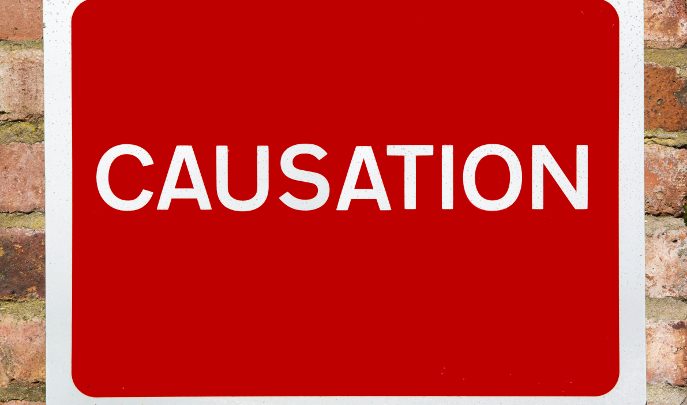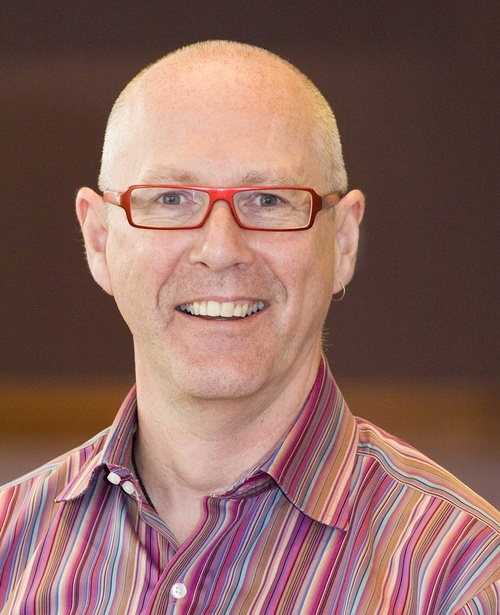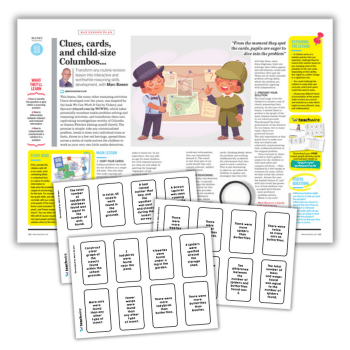If Maths Teaching Doesn’t Result In Successful Learning, Can We Claim To Have ‘Taught’ At All?

When finding out what teaching for mastery looks like, be sure that each element is actually a cause of good learning

- by Mike Askew
- Educator, researcher and speaker with a focus on primary maths education Visit website

I’m an amateur magician in my spare time. To say I successfully perform magic, two things have to happen: a task and an achievement. I pull a rabbit out of a hat (task) and, all being well, my audience gasps in amazement (achievement).
If, however, they caught a glimpse of white fur in the ‘empty’ hat, then I could hardly call myself a successful magician. Although Tommy Cooper ‘did’ magic, he is better remembered as a comedian because his tricks fooled no one. Performing magic well means succeeding at both task and achievement.
Teaching is a bit like doing magic in that it also involves both these elements. You have to stand up and teach something (task) but can only really say that you’ve taught it if your student understands something new (achievement).
Teaching is often talked about in its task sense, in terms of what teachers do, sometimes downplaying, leaving implicit or even denying responsibility for whether that teaching was successful and achieved pupil learning.
What teacher hasn’t uttered, ‘I don’t know, I’ve taught subtraction / division / capacity (delete as appropriate) again and they still don’t get it’. Is it really accurate to say, in such circumstances, that we’ve ‘taught’?
Good or successful?
Is quality teaching, then, teaching that successfully brings about learning? The writers Fenstermacher and Richardson suggest not, on the grounds that certain teaching practices might bring about learning, but the practices themselves may be dubious.
If I’m determined that my class get to grips with long division, I could drill them in maths lessons. If that wasn’t enough, I could cancel art classes and keep them in at break until everyone could successfully compute. I might succeed in my goal, but I doubt anyone would say that my teaching was high quality. And would it be moral?
Fenstermacher and Richardson go on to argue that quality teaching must involve a blend of successful teaching – bringing about intended learning – and good teaching – morally sound, age-appropriate and well-intentioned.
Successful teaching, in their terms, is learning-dependent – the measure of success is that the intended learning happens.
Good teaching is learner-sensitive – it is responsive to the needs of students. And these two are, to a degree, independent. Good teaching is not necessarily successful, any more than successful teaching is always good.
It is important that we think about both of these criteria when making decisions about the quality of recommendations for teaching practices. This was brought home to me recently when one of the evaluations that I got after running a professional development day read: ‘I’m surprised how much emphasis there was on working with number lines. We are being told that this is not good practice.’
Unfortunately I was not able to ask where this advice was coming from, but I suspect that the shift in emphasis towards vertical calculations has made some folk think that working with number lines is no longer necessary.
That rather misinterprets the value of number lines. If you see them only as a device for doing a calculation, then yes, perhaps they are not needed. But there is a wealth of research showing that working with number lines deepens pupils’ understanding of the number system (especially when you start to put fractions on the line). They may not be useful in successful teaching of vertical algorithms, but they are when talking about deep understanding of number and relationships.
Teaching for mastery
There is much advice available around now on what teaching for mastery could look like. Note that I say ‘could’ – we need to be clear about the grounds for advice couched as ‘shoulds’.
Take the recent guidance from the NCETM on teaching for mastery. It contains emphasis on the importance of whole-class teaching: ‘Pupils are taught through whole-class interactive teaching’ and ‘In a typical lesson pupils sit facing the teacher’. Are these claims about good or successful teaching?
We have to be careful about the difference between correlation and causation when making decisions about quality teaching. Yes, maths in Shanghai is done largely as a whole class so there is a correlation between that and the high standards of attainment, but does whole-class teaching cause the high attainment?
The same international studies that rank Shanghai highly also show that lessons in countries that perform poorly on international comparisons are equally well characterised as whole-class teaching. My own research into effective teaching found that there was no link between how teachers organised their classes – whole class, group work or individual – and the gains the learners made. And what about all the other things that correlate with teaching in Shanghai?
Perhaps we need to switch our language of instruction to Mandarin, or have all pupils wear black shoes. We need to look beyond large level descriptions of teaching practices to what happens within them. We should look at what teachers do within lessons, however they structure their class, to make decisions about whether or not one wants to take up such practices.
Learners’ ideas
The NCETM guidance does talk about what happens within lessons, such as ‘back and forth interaction, including questioning, short tasks, explanation, demonstration, and discussion’.
While this sounds closer to describing particular teaching practices, such advice is still open to a range of interpretations. There is a long tradition of research that shows that most teaching is characterised by ‘back-and-forth interaction’ but that this commonly fits a pattern of IRF – initiate, response, feedback.
The teacher starts the interaction, usually by asking a question (that ticks the ‘questioning’ box as well), a pupil replies and the teacher provides feedback, predominantly on whether the pupil was correct or not.
Again, it is not the existence of back-and-forth interactions or the asking of questions that make for quality teaching, but the form and content of these.
Managing interactions, asking questions, and orchestrating discussions, are, in Deborah Ball’s terms, domains of teaching. Let’s peel these back further to reveal the core practices and routines involved.
A ‘core practice’ is something that a teacher regularly does that, over time, supports deep learning. ‘Routines’ are specific teaching moves that can be used to enact a core practice.
As yet, the literature on what might constitute a universally accepted set of core practices is thin, but one that there is widespread agreement over is that quality teaching involves eliciting learners’ ideas, probing these, analysing them for mathematical appropriateness and building on them.
Three routines
If I want to have as a core practice getting learners’ ideas out into the open, what are some of the routines and day-to-day actions that I might do to bring this about?
Routine 1: Include tasks that promote talk, not just answers I’ve written before about ‘reasoning mini-lessons’ based around tasks like ‘true or false’ or reasoning chains, tasks that go beyond simply providing answers to calculations, and encourage pupils to explain their thinking. Here are suggestions for tasks that promote talk.
Which of these could…? The structure of these tasks is to present pupils with a range of options and ask them, in pairs, to decide which meets a particular need. They justify their decision to their partner and then to the class. The word ‘could’ is important here – there is no single set of correct answers.
Which of these calculations could you do mentally? 8 + 2, 80 + 20, 380 + 120, 380 – 120, 80 – 20, 79 – 19, 379 – 119
Which of these words could you use when talking about octagons? Perimeter, circumference, area, right angle, diagonal, radius, face, side, edge, regular, irregular, symmetrical
Which of these numbers could be helpful in thinking about percentages? 10, 100, 25, 12.5, 15, 6, 50, 75, 99, 20, 35, 62
Which of these pairs of numbers could be related to 8? 6, 2; 8, 1; 7, 1; 10, 2; 16, 2; 5, 4; 8, 10; 9, 3; 64, 4; 64, 3
Routine 2: Turn and talk Instead of hands up after asking a question, ask pupils to ‘turn and talk’ to the person next to them and share what they think is the answer. If they disagree, ask them to try and reach agreement.
This routine changes the quality of the talk, not only because everyone has an opportunity to voice what they are thinking but also, as they are talking, the teacher has the opportunity to listen in and select whom to ask to share their thoughts with the class.
Routine 3: Accept all offers equally This routine involves acting as the collector of answers, rather than the immediate judge of them.
If learners give different answers, simply, without comment, list them on the board. Then a moment of turn-and-talk puts the onus for thinking and reasoning back onto the learners to see if they can sort out which one is correct.
Over time, this routine also establishes the class as a safe space in which answers can be offered, even if you are not completely confident they are correct.
Graded grains
To paraphrase the old Homepride advert, graded grains make finer teaching.
We can think of domains of teaching, core practices and routines as different grain sizes. Thinking about practice at all levels helps answer both the ‘how’ and ‘why’ questions of teaching. ‘How do I enact effective back-and-forth interactions?’ is answered, partially, by seeing this as involving the core practice of working with learners’ ideas and working with routines like turn and talk.
The answer to ‘why do you not immediately correct wrong answers?’ can be traced back through the importance of working with learners’ ideas to the domain of effective interactions.
Mike Askew is professor of mathematics education at the University of Witwatersrand, Johannesburg as well as a researcher and freelance writer about primary mathematics (mikeaskew.net).










